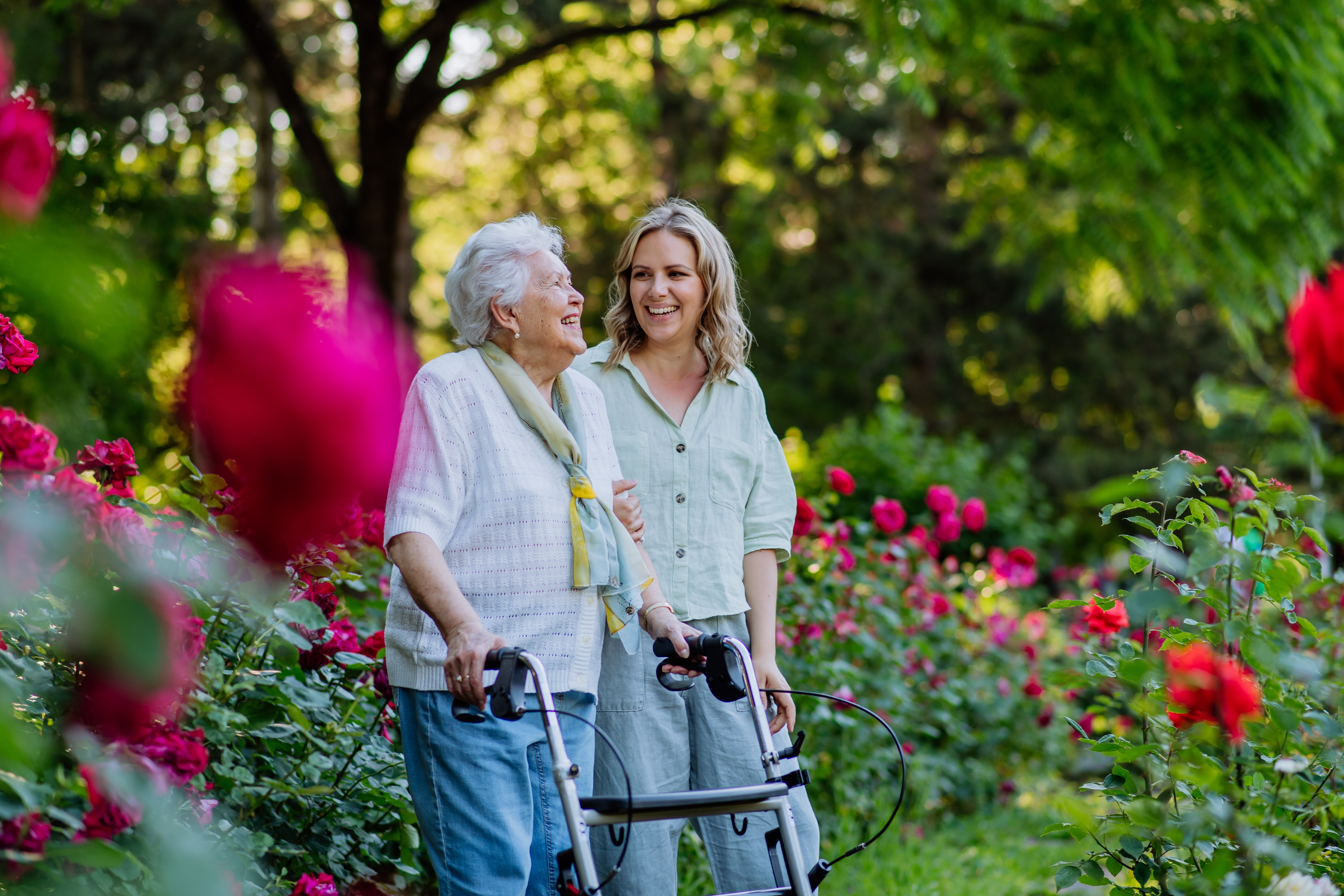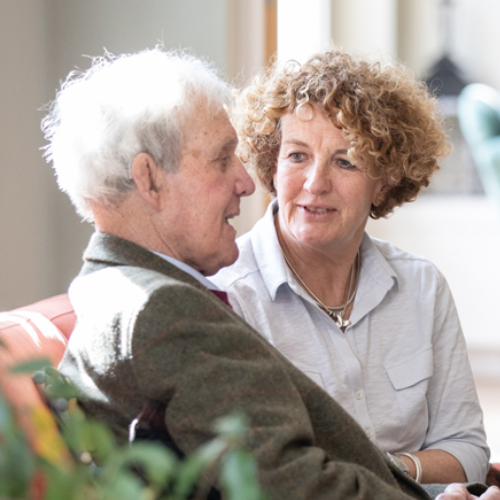According to NHS research, adults over the age of 65 spend an average of 10 hours sitting or lying down each day.
As we age, it’s completely natural for our energy levels to dip, and for physical activity to feel a little more demanding — especially during the hotter months. Whether it’s due to mobility limitations, chronic conditions, or simply feeling more tired in warmer weather, many older adults find themselves slowing down this time of year.
That said, staying active, even in small ways, remains as important as ever. Gentle movement supports circulation, joint health, balance, and mood, and it also helps maintain a sense of independence. The key is finding the right kind of activity.
Low-intensity activities offer a safe, enjoyable way to keep moving, especially when combined with your support and encouragement. In this blog, we’ll share 5 simple ways you can help your loved one stay active this summer.
Understanding low, moderate and high-intensity activity
Before jumping into our 5 activities, it’s important to break down what we mean when we say ‘low-intensity activity’. Here are the different levels of physical activity defined by the NHS.
Low-intensity activity involves any movement beyond sitting or lying down. These are small actions that get the body moving in light, manageable ways, like slowly walking around the house, making a cup of tea, standing to fold laundry, or making the bed
Moderate-intensity activity involves activities that slightly raise our heart rate and quicken breathing. This includes activities like cycling, water aerobics, pushing a lawnmower, or going for a walk in the park.
High-intensity activity pushes our body further, leading to noticeably faster breathing and a faster heartbeat. This includes more strenuous exercises like running, swimming, and dancing.
For many older adults, especially in warmer weather, low-intensity movement is the safest and most accessible form of exercise, and it still brings plenty of benefits when done regularly.
Low-intensity activities for older people
With low-intensity activities in mind, here are some simple ways you can help your loved one stay active this summer.
1. Make cooling treats together
Preparing food might not seem like exercise at first glance, but even simple kitchen tasks involve a range of gentle movements that can help keep the body engaged, and the mind stimulated.
As a caregiver, you can support your loved one through the process of making something refreshing, like homemade ice lollies or a fruit smoothie.
Why it helps: reaching for ingredients, slicing soft fruits, stirring, and pouring all help with coordination and fine motor skills. Plus, this type of activity encourages movement in a safe, familiar setting.
2. Help to attend outdoor social groups
Spending time outdoors during the summer is great for our mental health. Local groups, garden clubs, or community craft sessions all provide gentle opportunities to move, while staying socially connected.
You can play a key role here by helping to find appropriate groups (ideally those tailored to limited mobility), arranging transport, and offering reassurance.
Why it helps: social outings support gentle physical activity while reducing feelings of isolation, boosting confidence, and improving mood.
3. Support with light gardening tasks
Gardening is a fantastic summer activity, providing light movement, a sense of purpose, and a connection to nature. Even if heavier tasks aren’t an option, many small jobs still offer physical and mental benefits during the summer.
As a caregiver, you can support by setting up a comfortable space — perhaps with a raised planter or chair — and offer help with tasks like potting plants, pruning flowers, or watering with a light can.
Why it helps: gardening promotes gentle stretching and coordination, and can create a sense of calm and independence.
4. Create a bird-feeding routine
Birdwatching and feeding wildlife are both meaningful daily activities that encourage light movement. Walking to refill a bird feeder, scattering seeds, or checking a bird bath are all low-intensity tasks that help us to stay active, while keeping us connected to nature.
You can help by setting up a birdwatching station near a window or garden bench, or assisting with refills and keeping track of visiting species together.
Why it helps: beyond the physical aspect, this activity supports mindfulness, sensory engagement, and a connection with the outdoors.
5. Plan short outings and trips
Whether it’s a trip to the seaside, a walk through a local garden, or a quiet afternoon in a museum, a change of scenery can make a real difference to our well-being.
You can support your loved one by choosing locations with accessible paths and seating, and pacing the day to allow for plenty of rest, hydration, and shade.
Why it helps: outings like these combine movement with cognitive stimulation and social interaction, all of which contribute to our well-being.
Staying safe while staying active
As temperatures rise, it’s important to keep loved ones safe and comfortable. Older adults can be more vulnerable to heat-related issues like dehydration and exhaustion, so regular breaks, sunscreen, cool clothing, and plenty of water are essential.
A little movement goes a long way
When it comes to staying active in the summer, exercise doesn’t have to be challenging. With your help and encouragement, you can support your loved one to stay active during the summer, with low-impact activities that make a real difference.
If you’re looking into care options this summer, take a look at our hourly care and live-in care options.





